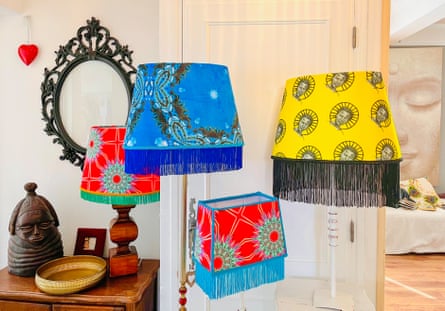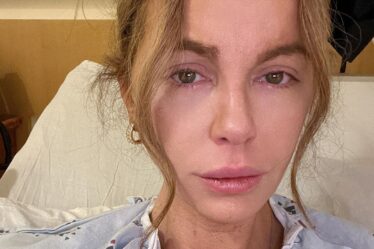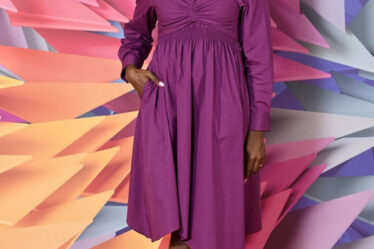
Roslyn Henry was never really into design. “No, no, no,” she says. Design ambushed her, or crept up on her, step by tiny step, until last year, when, at 60, she became a pattern designer and sold her first cushion on a market stall near her home in south-east France.
Henry grew up in Bolton and London and left school at 16. No one in her family had gone to university; she did a hotel-reception course and later worked as a secretary in an advertising agency, then as a personal assistant. Now 61, she feels “like a 20-year-old just starting out. I’m supposed to be calming things down. It’s all a bit the opposite way round.”
It is tiring but rewarding work, she says: “Most of the time, I’m really excited, because I get a lot of good feedback that energises me. I am doing something that people like and are willing to spend money on.”
The turning point came when Henry entered her 50s. In 2004, at the age of 43, she had moved to south-east France with her younger daughter “for love”, after her former boyfriend Paul asked her to join him. (Her elder daughter was at university in England.) The couple ran a B&B and married three years later.
An interest in photography began to awaken. She’d had a miscarriage in her 40s, while her father, who lived in the US, was dying. She took photos of insects in her garden “for cathartic reasons”.
It was a carpenter bee that started it. “I remember thinking: ‘My God, that’s enormous.’” She always had a camera to hand, initially Paul’s Nikon. “You have to concentrate so much to get the picture; you go into this zone. It takes you into yourself. You can’t think about anything else apart from what you’ve got in your hands,” she says.
After the bee, other insects followed – dragonflies, damselflies, hummingbird moths – and flowers. “Green spaces are magical,” says Henry.
She and Paul had been married for four years when he was knocked off his bicycle in a hit-and-run collision and suffered a traumatic brain injury. “He completely lost his memory. He was unable to communicate, didn’t know who anybody was – didn’t know who I was,” she says. Paul had worked in advertising and been to art school. After the collision, “what he did, massively,” says Henry, “was draw. He spent his whole time drawing, drawing these crazy pictures.”
In sorrow and distraction, Henry began to look through all the photographs she had amassed. “I chose one of my dog, Caesar, and started to make this kaleidoscope picture. I was like: ‘Oh, patterns!’”
Paul lived for another five years after the accident, in a care home, while Henry moved to a smaller, more manageable house; a fresh start. In her spare time, she continued experimenting with digital processing. “You’re fiddling around with things. It’s kind of therapeutic, just putting your photo in and playing on the computer, changing the shapes of patterns: ‘How is that made up?’ My ‘me time’, I suppose.”
While visiting her elder daughter in London, Henry enrolled on a week’s course in Photoshop. The questions began to change. “What would I do with the patterns? Maybe I can get these printed.”
She put her designs on cushions, lampshades, mugs and dress fabrics. In November 2021, she booked a stall at the artisans’ market near her home in Buis-les-Baronnies. “People came and talked to me,” she says. She sold nothing, but was encouraged to go back. “I was having conversations with people who live here. They would say: ‘We’ve not seen you here before.’ Which made me think I must have been a hermit. I thought: ‘Oh! I actually do live here. I started to feel like part of the community.”
In a way, the market brought Henry out of hibernation. Last year, she sold her first cushion; now, she sells through her website, too, including T-shirt designs that use British Library images to celebrate black African hair. She is now exploring wallpaper designs, plus a range based on Paul’s drawings.
Her new career has given her validation – “that I can do something, that I’m creative” – and fresh ambition: “My dream one day is to have a little shop.”



